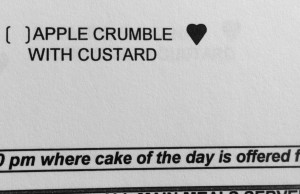 This is what I am up against in the hospital food debate.
This is what I am up against in the hospital food debate.
‘These choices are recommended for individuals with heart disease and DIABETES’
Sugar laden jellies such as jellied peaches, custards, fruit yoghurts, ice cream, sponge cake, fruit loaf, apple crumble and sultana pudding are just a few options from the current hospital menu for inpatients. At least a daily serving of these foods appear with a healthy heart symbol and a recommendation for these to be consumed by diabetics. Continue reading


